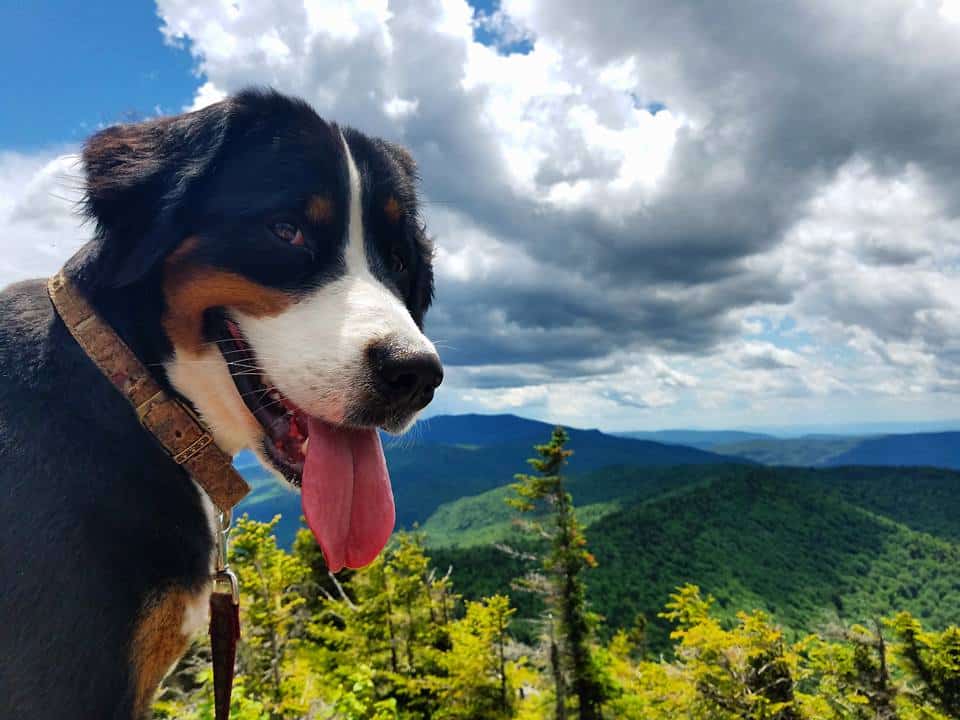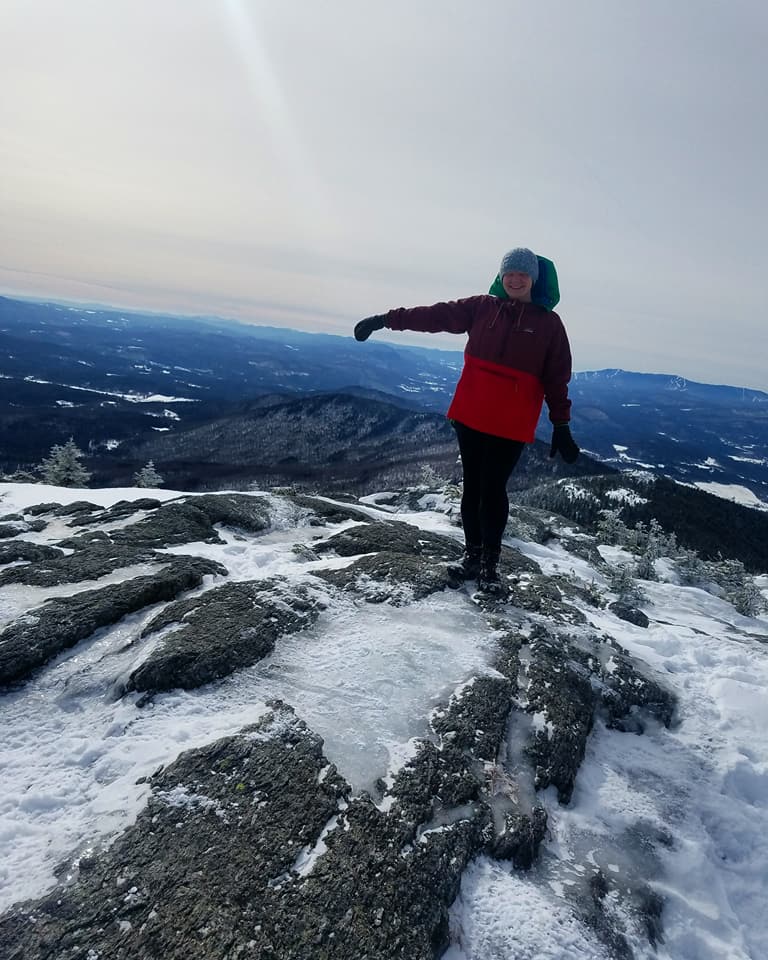by Claire Andrews, Program Coordinator, U.S.-Asia Partnerships for Environmental Law
July 8, 2020
Hiking in Vermont is the gift that keeps on giving, no matter the season. Whether the branches are frosted with snow like diamonds, or burgeoning with the kaleidoscope of fall colors, each trail is a unique and pleasant surprise that offers a different adventure from season to season

Some are more leisurely, beautiful in their simplicity, while others are a test of both body and mind, requiring all your limbs and focus. On my quest to conquer all of Vermont’s peaks, I have discovered many incomparable trails. In the heart of the Mad River Valley, nestled among rivers, grasslands, and hills, is a mountain of particular joy to climb: Burnt Rock Mountain. A steady ascent across streams and mountain gullies, and somewhat terrifying climbs up ladders and staircases of stone, lead to breathtaking bald rock faces to boulder, revealing a view of the entire Mad River Valley, Sugarbush Ski Resort, and even Camel’s Hump. Not for the faint of heart, but for the soul of an adventurer, Burnt Rock Mountain is recommended for the climber looking to break away from the typical dirt trails. Stopping at Prohibition Pig Brewery or Waitsfield’s Mad Taco afterwards for celebratory burritos is always recommended, and your stomach will thank you.
For the hikers looking for more leisurely climbs around Vermont, I will forever recommend these two hikes: Stowe Pinnacle and the trail closest to Vermont Law School: Kent’s Ledge. Both can easily take less than an hour, offer easier hiking alternative trails, and provide excellent ledges to sit, snack, and enjoy the view. For those of you who enjoy a more difficult ascent, I suggest conquering Vermont’s five 4,000-foot peaks. Each is unique and challenging in its own right, and all leave the climber with the insatiable desire to move on to the next peak. The feeling of elation and victory that comes with reaching the summit is indescribable. Every hiker that comes to Vermont needs to experience the state’s quintessential peak, Camel’s Hump. Much of Camel’s Hump’s summit is protected due to endangered and fragile fauna. A steady climb with a variety of trail options, you can’t go wrong on Camel’s Hump, and perhaps you can even find the elusive World War II Bomber Plane hidden atop its mountainside.
Speaking of plane crashes, Vermont’s Mount Abe boasts a crash site just off the trail. After passing over Vermont’s famous Long Trail and climbing hand over heel up a rock face, you reach the summit, featuring views of both Vermont and New York, and the wreckage of a plane crash from the 1970s. (Worry not, there were no casualties for either crash site!) Afterward, Warren Falls is just around the corner of the trailhead waiting to provide a refreshing post-hike dip.

No matter the goal, whether it be a daunting adventure or leisurely stroll, each of Vermont’s mountains has its own appeal. The Beast of the East, Killington Mountain up the Bucklin trail is the ultimate test of endurance, while Mount Pisgah provides a more laidback climb towards an incredible view of Vermont’s Northeast Kingdom. If you’re a winter adventurer, daunted by the idea of chugging along through the snow, pick up some snowshoes from VLS’s gym and head up Hunger Mountain’s Middlesex trail, which offers a more gradual climb but the same fantastic summit. My favorite hike, one of Vermont’s lesser-known delights, is Worcester Mountain. Often overlooked by fans of Mount Mansfield and Camel’s Hump, Worcester offers everything— bouldering, stone staircases to kick your glutes into shape, running water alongside the trail and, best of all, a miraculously uncrowded trail. No matter the trail you chose, no matter how many times you climb it, Vermont will always find ways to surprise and delight you. So pack up your snacks and a water bottle or two—you’re going to need them!